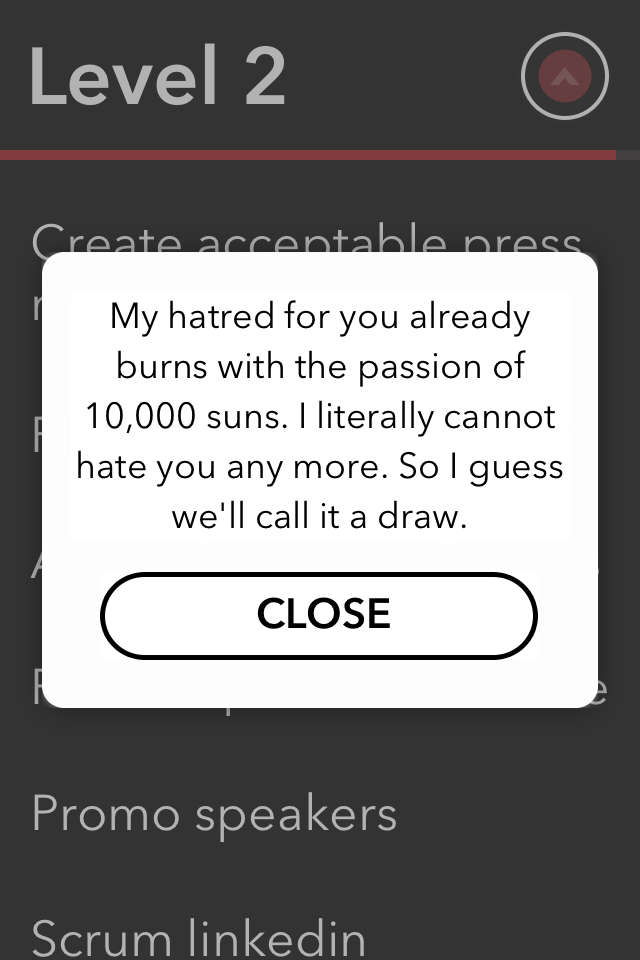Loyalty Programs Can Be Much More than Points
Whenever I start talking about gamification, one of the first questions that I get asked is this: how is it different from loyalty programs?
As part of my MBA in the Management of Technology and Innovation at Ryerson University, I was tasked with writing a major research paper on a business topic of my choosing. As a gamer, I was extremely interested in the rising trend of gamification. Aside from the question about loyalty programs, a lot of small startups I talked to were interested about this “gamification thing they heard of”, but really had no idea where to begin or how to use it. When I came across the CARROT todo list, I was amazed at its simplicity and execution. It pushed me over the edge, and made me really want to find out exactly how gamification was being used.
After researching the topic further, I set about creating a list of any gamification example I could find. I drew sources from academic literature, news articles, research studies, websites and apps and put them all together in a database. I logged the industries using gamification, the mechanics used, the outcomes they were trying to achieve and more. You can see a summary infographic of the research, as well as the full report, here.
A total of 79 systems were studied that focused on the following industries: consumer, education, enterprise, government, health, social good, research and finance. Not surprisingly, consumer-focused gamification is by far the most popular, with 57% of the systems studied targeted towards the consumer space.
For game mechanics, 84% of the gamified systems used points, making it by far the most popular mechanic used (and again, not surprising). This was followed closely by challenges, badges, leaderboards, rewards, badges, competition and cooperation, indicating that the PBL triad of points, badges and leaderboards is fairly strong.
However, what was surprising is the lack of narrative used in gamification: only 7 out of the 79 examples used any form of storyline in their mechanics. One of the tenants of gamification is improving engagement: yet, when you think about it, what is it that makes games engaging? Is it the individual mechanics, or is it the storyline elements that tie everything together? Would World of Warcraft be as popular as it is if you stripped out all its story? Halo? Final Fantasy?
To me, this lack of narrative is probably one of the biggest problems in gamification today. While some gamified apps, such as Epic Win, do create a whole game world and narrative around what is essentially a to-do list, others have succeeded by only implementing small elements of narrative.

For example, CARROT is a to-do list (and now alarm clock), that lets you interact with a ‘sentient’ caretaker. You get rewarded if you keep her happy, and punished if you sleep in or don’t accomplish your tasks. (Note how I’m referring to my to-do list and alarm clock as a she…) The narrative elements used in these apps are simple yet effective. Gamification designers need to take note.
Another great example, that also shows you what gamification can accomplish, is Pain Squadby SickKids hospital. The app was used to encourage young cancer patients to log a daily pain journal, a task that even adults will find trouble doing, so doctors can better treat them. The app enlisted children in Pain Squad, a special police department, and were promoted through the ranks, going from Rookie to Captain. At each step, they would unlock motivational videos from cop shows such as Rookie Blue and Flashpoint. Through these simple gamification and narrative elements, Pain Squad managed to solve a problem that previously had no easy solution.referring to my to-do list and alarm clock as a she…). The narrative elements used in these apps are simple yet effective. Gamification designers need to take note.
And to me, this is what gamification is all about. While it is a great tool to improve your brand engagement with customers or to make business processes more efficient, it really comes to life when it is applied to real world problems that require a new of thinking to solve. It is already being used to unlock scientific advancements, encourage recycling, improve healthy living and increase patient care. It is best when its about solving problems, and I look forward to seeing how gamification can be used to improve our lives.
Try to get a loyalty program to do that!
CC Image by Pigsaw









I agree. A good story is what draws users back. I do not like running but with Zombies Run I have to because without running there would not be any development of the story 🙂
It’s funny, you do all this research, then you come up against a gem like Zombies Run! I’ll have to check it out myself.
Nice article!